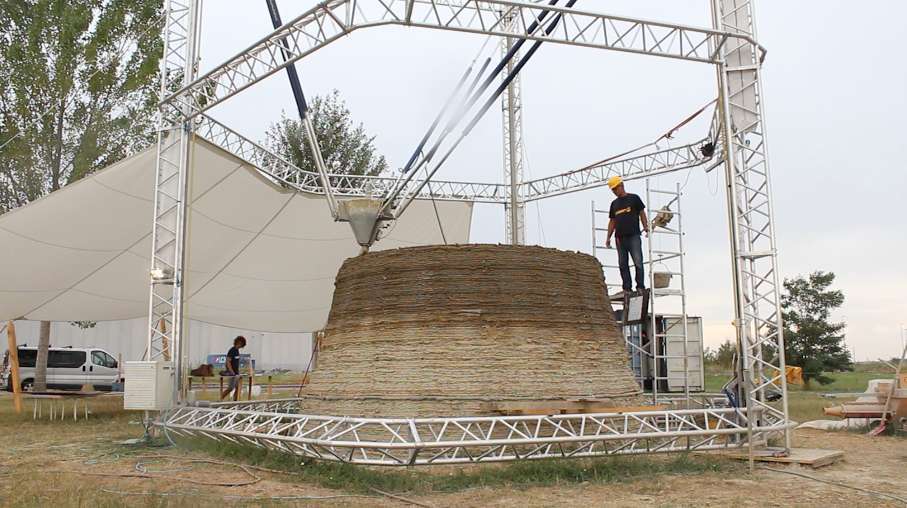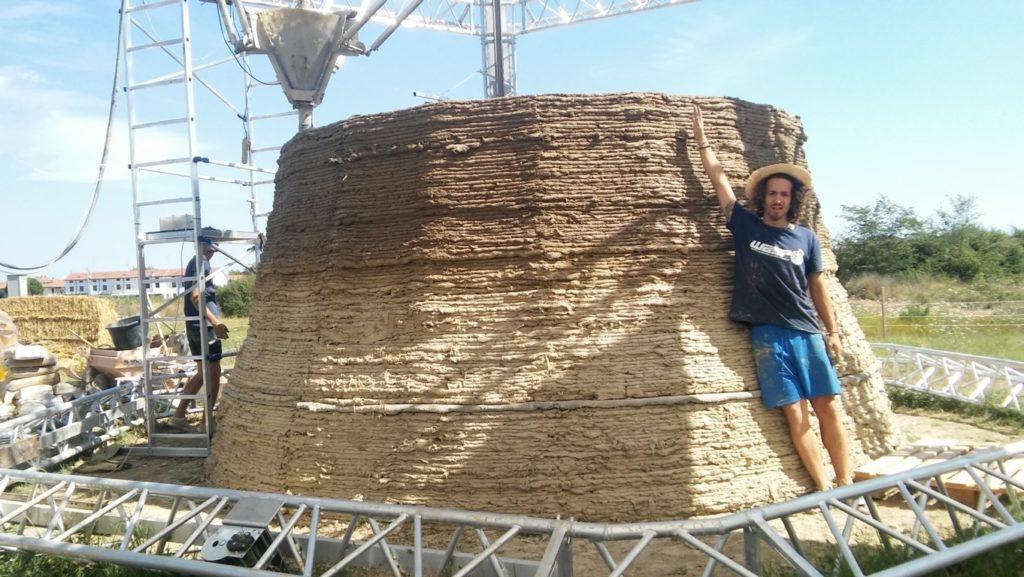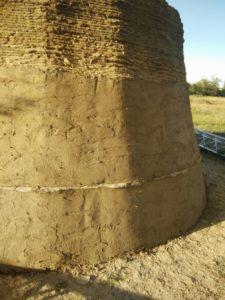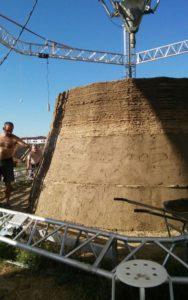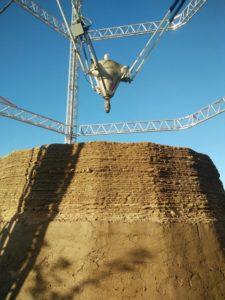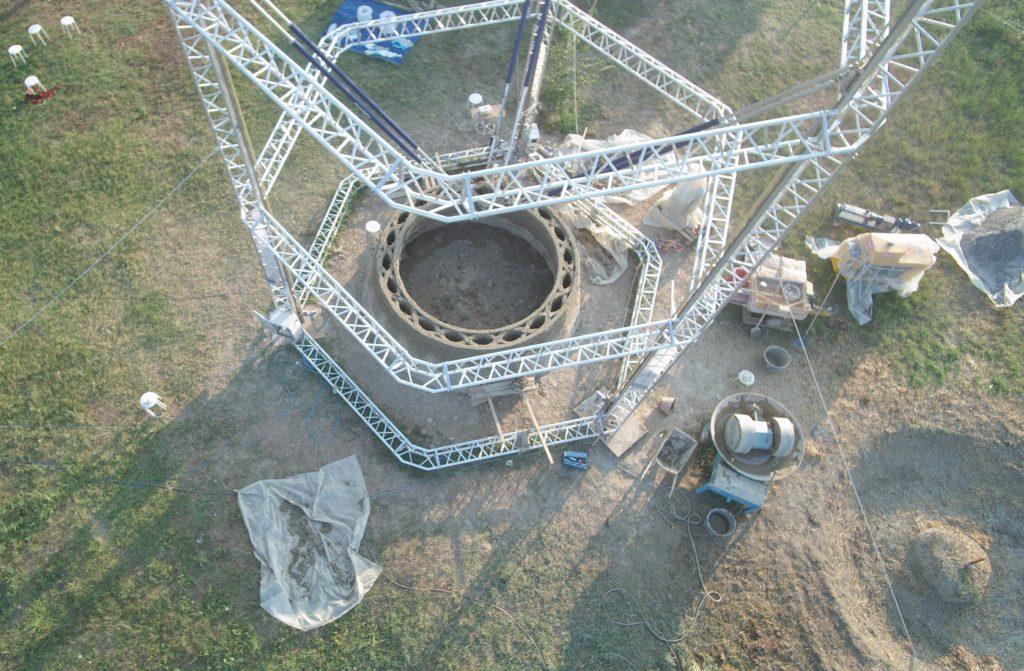 Since the Italian municipality of Massa Lombarda, in collaboration with WASP, announced that they would be constructing the world’s first 3D printed village, we’ve been eagerly awaiting updates about the progression of the project. It seems impossible at first glance – an entirely 3D printed village? But thanks to the massive BigDelta 3D printer, construction began last month on the first house of the many that will eventually make up the village of Shamballa.
Since the Italian municipality of Massa Lombarda, in collaboration with WASP, announced that they would be constructing the world’s first 3D printed village, we’ve been eagerly awaiting updates about the progression of the project. It seems impossible at first glance – an entirely 3D printed village? But thanks to the massive BigDelta 3D printer, construction began last month on the first house of the many that will eventually make up the village of Shamballa.
Today, WASP provided a few new updates on how the project is going. With any undertaking of this scale, particularly something so unprecedented, there are naturally going to be a few challenges and snags – but the Shamballa team has done an excellent job at solving any problems that arise. A giant printer is going to have the same issues as any other printer – print interruptions, material loading, etc. A giant outdoor printer, working continuously to print a village, is also going to have its own challenges – weather, the need for someone to be supervising the printing process at all times – but overall, the project is going swimmingly.
“We have already proved that two men and one machine can 3d-print a comfortable and healthy shelter with extremely little money,” said Massimo Moretti, founder of WASP. “We are very satisfied of the results, even if we know there is still a lot to do.”
Extremely little money isn’t an exaggeration, either. So far, the team has printed 270 centimeters of wall from clay and straw, five meters in diameter, using an incredible 40 tons of material. Each layer, weighing approximately 300 kilos, takes about 20 minutes to print. With all that material, costs – and energy consumption – have stayed remarkably low. Here are some of the numbers, broken down:
- Water usage: 2 cubic meters, 200 kwh, €3
- Overall energy cost: €32
- Straw: €10
- Gasoline for the motorized hoe: €3
 That’s a total of €48. Clay, of course, is plentiful in the landscape, so no additional cost there – plus, by kneading the clay with the feet rather than by machine, energy consumption is reduced by 90%.
That’s a total of €48. Clay, of course, is plentiful in the landscape, so no additional cost there – plus, by kneading the clay with the feet rather than by machine, energy consumption is reduced by 90%.
“Clay and straw with no additive can be easily printed in 3d,” said Moretti said. “The period of transformation from liquid to solid allows to print around 60 centimeters per day, or even more in the summer (maybe one meter per day). Therefore: two men and one machine can 3d-print a comfortable and healthy shelter in a very short time and with really little money.”
Compare all of that to the cost, time and material involved in a typical construction project, and it’s even more amazing. In terms of quality, the structure is solid and capable of withstanding high levels of stress. The weight-performance ratio of the straw and clay means that no additional support is required; 10% lime was used to avoid plaster placer mining.
After making such fast progress, the team is taking a much-needed and well-deserved break. Construction is stopping for a week, after which the team will go back to work with renewed energy and big goals for phase two.
“When the work starts again, we will raise the wall until 4 meters, then we’ll create the door and build the roof,” said Moretti. “In the future we will test new materials and continue the research on soil and straw.”
The team plans to refine their system for further reduction of cost and time. A bit of modification will be made to the extruder, with the goal of automating the system and printing a full shelter in just a few days. At this rate, we’re going to be seeing the world’s first 3D printed village in no time.
To see the BigDelta at work, check out a quick video below; you can see a lot more at WASP’s YouTube channel here. Discuss the project further over in the WASP 3D Printed Shamballa forum at 3DPB.com.
[Images supplied directly to 3DPrint.com from WASP]
Subscribe to Our Email Newsletter
Stay up-to-date on all the latest news from the 3D printing industry and receive information and offers from third party vendors.
You May Also Like
3D Printing Unpeeled: New Arkema Material for HP, Saddle and Macro MEMS
A new Arkema material for MJF is said to reduce costs per part by up to 25% and have an 85% reusability ratio. HP 3D HR PA 12 S has been...
3D Printing News Briefs, January 20, 2024: FDM, LPBF, Underwater 3D Printer, Racing, & More
We’re starting off with a process certification in today’s 3D Printing News Briefs, and then moving on to research about solute trapping, laser powder bed fusion, and then moving on...
3D Printing Webinar and Event Roundup: December 3, 2023
We’ve got plenty of events and webinars coming up for you this week! Quickparts is having a Manufacturing Roadshow, America Makes is holding a Member Town Hall, Stratafest makes two...
Formnext 2023 Day Three: Slam Dunk
I’m high—high on trade show. I’ve met numerous new faces and reconnected with old friends, creating an absolutely wonderful atmosphere. The excitement is palpable over several emerging developments. The high...


